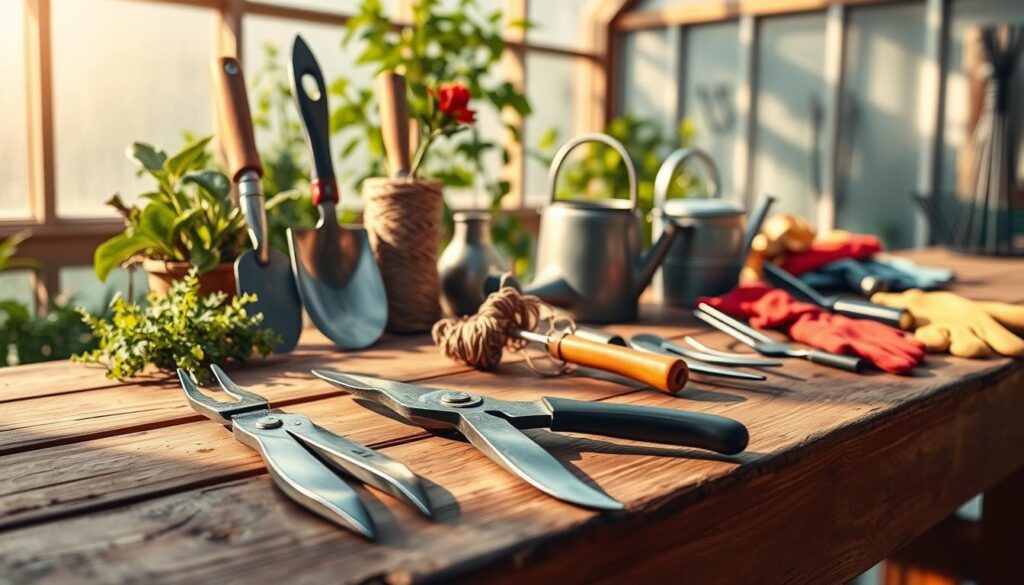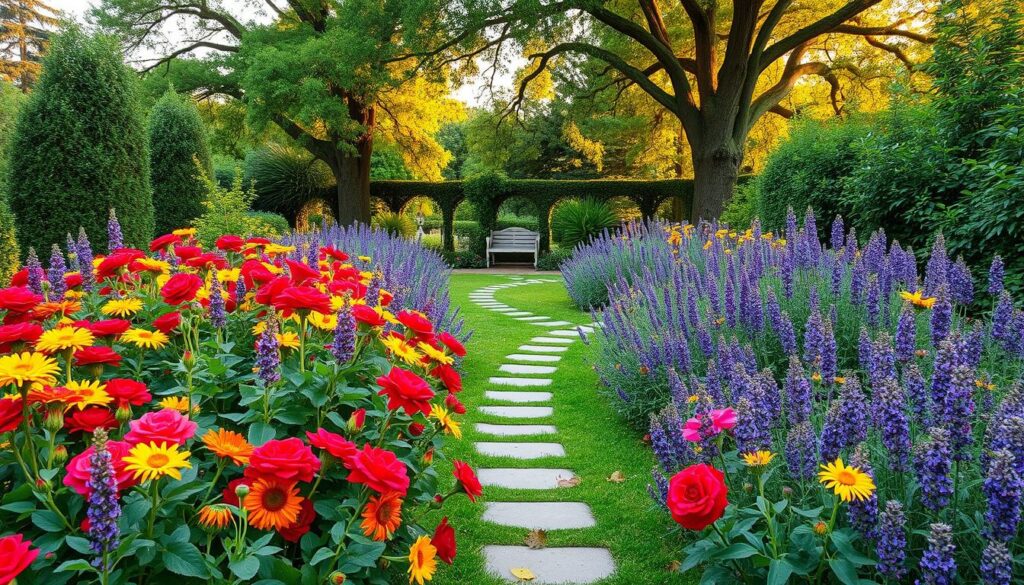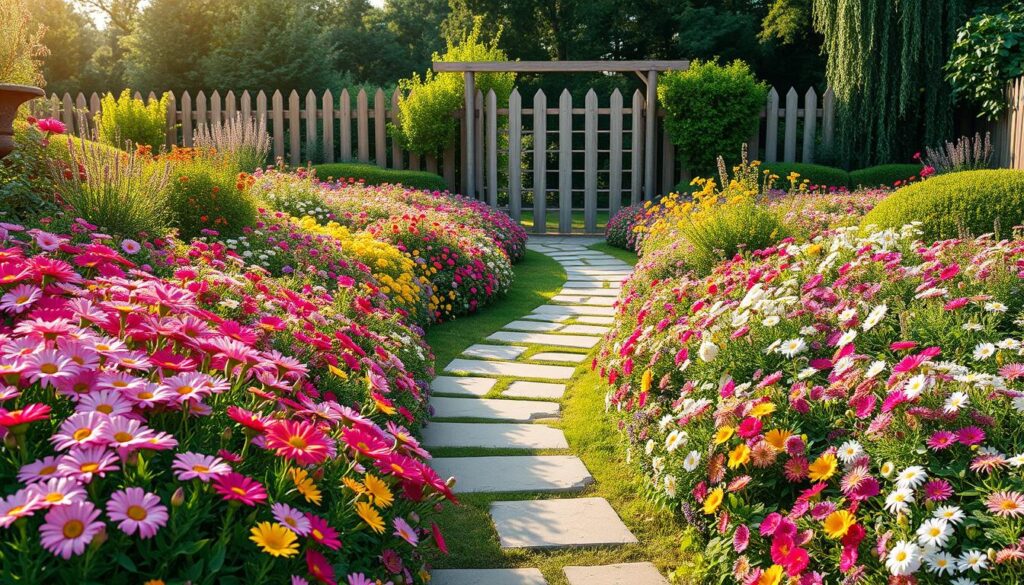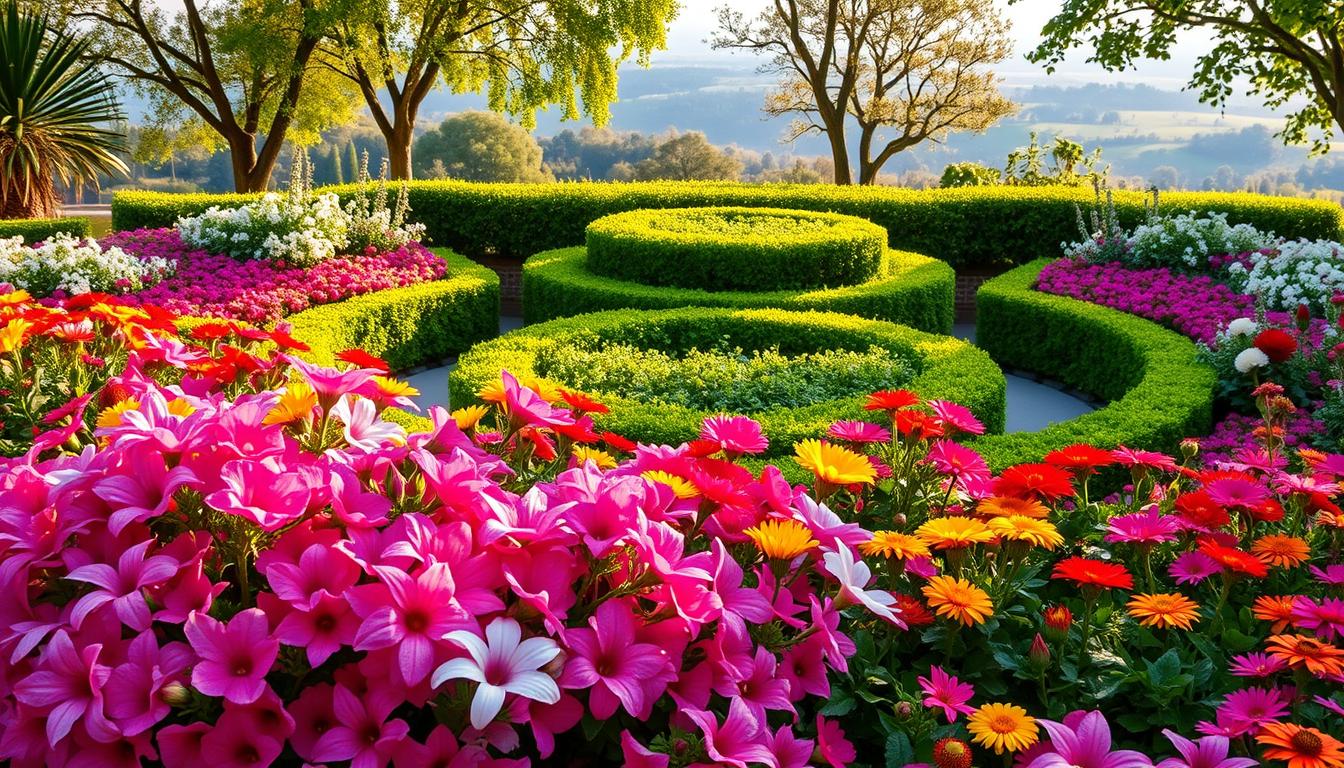Creating a stunning outdoor space starts with a solid plan. Modern garden design tools like Planner 5D and GardenPuzzle make it easier than ever to visualize your ideas. These programs offer drag-and-drop features and 3D modeling, helping you see your garden plans come to life before you start planting.
Both tools are perfect for beginners, with intuitive interfaces and extensive libraries of plants and objects. Planner 5D, for example, includes over 15,000 customizable items. GardenPuzzle even allows you to upload photos and visualize seasonal changes, ensuring your project looks great year-round.
Using these tools can save you time and money by avoiding costly mistakes. You can experiment with different layouts and elements virtually, ensuring your final design is exactly what you want. Plus, mobile compatibility lets you plan on-site, making it easy to adapt your ideas to your backyard.
Key Takeaways
- Modern tools like Planner 5D and GardenPuzzle simplify garden planning.
- 3D visualization helps you see your design before starting the project.
- Extensive plant libraries offer thousands of customization options.
- Virtual planning helps avoid costly mistakes.
- Perfect for beginners with no prior design experience.
- Mobile compatibility allows on-site planning.
Why Use a Flower Bed Layout Planner?
A well-thought-out garden design can transform your outdoor space effortlessly. By using modern tools, you can create a space that’s both functional and visually appealing. Planning ahead ensures your garden thrives while saving you time and effort.

Benefits of Planning Your Garden Layout
Proper garden design reduces maintenance time by an average of 3 hours per week. Strategic layouts also increase pollination by 40%, ensuring your plants thrive. Planned gardens have 65% better pest resistance through smart plant pairing.
Balancing a vegetable garden with ornamental plants is easier with a planner. Tools like Planner 5D offer texture mapping for realistic previews of water features. Color coordination tools prevent clashing schemes, creating a harmonious look.
How a Planner Simplifies the Design Process
Planner 5D users complete designs in under 2 hours, thanks to its intuitive interface. The program helps visualize how plants like hydrangeas will look under specific trees. Free garden planners allow you to test multiple layouts risk-free.
Almanac data shows planned gardens yield 3x more blooms. With features like drag-and-drop elements and 3D modeling, you can see your plans come to life before planting. This ensures your final design is exactly what you envisioned.
| Aspect | Planned Garden | Unplanned Garden |
|---|---|---|
| Blooms | 3x more | Standard |
| Pollination | 40% increase | Standard |
| Pest Resistance | 65% better | Standard |
Getting Started with Your Flower Bed Layout Planner
Planning your garden begins with understanding your space and needs. Whether you have a small backyard or a sprawling yard, assessing your area is the first step to creating a thriving outdoor space. Modern tools like Planner 5D and GardenPuzzle make this process easier than ever.

Assessing Your Garden Space
Start by measuring your yard using Planner 5D’s grid system, where one square equals one square foot. This helps you visualize the size and layout of your garden. For example, a 28’11” x 19’11” space with clay soil can be optimized using GardenPuzzle’s soil type filter, which recommends plants based on pH levels.
Pro tip: Map sunlight patterns across seasons using 3D shadows. This ensures your plants get the right amount of light throughout the year.
Choosing the Right Plants for Your Climate
Selecting plants that thrive in your climate is crucial. For USDA zones 3-8, peonies are a great choice, while lavender works well in zones 5-9. Integrating a kitchen garden with flowers like calendula and nasturtiums adds both beauty and functionality.
Layering shrubs like hydrangeas behind flower beds creates depth and visual interest. For sunny areas, consider sun-loving zinnias, which thrive in southern exposures.
Understanding Soil and Sunlight Requirements
Testing your soil is essential. Use home kits or digital analyzers to determine its composition. Planner 5D’s sunlight simulator predicts growth patterns, helping you place plants in the best spots.
Here’s a quick comparison of planned vs. unplanned gardens:
| Aspect | Planned Garden | Unplanned Garden |
|---|---|---|
| Soil Health | Optimized for plant needs | Variable, often poor |
| Sunlight Exposure | Strategically placed | Random, inconsistent |
| Plant Growth | Thriving, healthy | Stunted, uneven |
“A well-planned garden not only looks beautiful but also supports healthy plant growth.”
By understanding your space, climate, and soil, you can create a garden that flourishes year-round. Start planning today and watch your outdoor space transform!
Design Ideas for Your Flower Bed Layout
Transform your outdoor area into a vibrant sanctuary with creative design ideas. Whether you’re working with a small backyard or a sprawling space, thoughtful planning can make all the difference. Let’s explore how to incorporate color, texture, and functional elements to create a stunning and cohesive look.
Incorporating Color and Texture
Using a color wheel strategy can elevate your garden’s visual appeal. Pair complementary hues like purple salvia with yellow coreopsis for a striking contrast. Adding texture through plants like ornamental grasses or lamb’s ear creates depth and interest.
For a balanced look, try the thriller-filler-spiller method in container designs. Place tall, eye-catching plants (thrillers) in the center, surround them with medium-height fillers, and let trailing plants (spillers) cascade over the edges.

Adding Water Features and Pathways
Water features like fountains or small ponds can add a calming element to your space. Use tools like the Pond Calculator to determine the best placement and size for your backyard. Surround these features with plants that thrive in moist conditions, such as hostas or ferns.
Pathways are both functional and decorative. Planner 5D’s stone path designer offers 83 texture options, allowing you to create meandering cobblestone paths that blend seamlessly with your garden’s aesthetic.
Creating a Seasonal Bloom Plan
Ensure year-round beauty by planning for staggered bloom times. For example, an Ohio gardener’s 19’11” x 29’11” flower garden features tulips in spring, zinnias in summer, and asters in fall. GardenPuzzle’s 4-season preview feature helps visualize these changes.
Group vegetable plants with matching-height flowers for visual cohesion. For instance, pair tomatoes with marigolds or peppers with petunias. This not only looks great but also supports healthy growth.
“A well-planned garden ensures continuous color and interest throughout the year.”
Download our seasonal bloom plan template to keep your garden vibrant and thriving in every season.
Conclusion
Bringing your outdoor vision to life is easier than ever with the right tools. A garden planner can transform your ideas into a stunning reality, whether you’re a beginner or an experienced gardener. Start small with a 3’x5′ space to test your design before expanding.
Try Planner 5D’s free garden version, featuring over 10,000 assets to spark your creativity. Their mobile app makes it convenient to plan your home project on-the-go. Plus, take advantage of their 50% first-year discount for premium features.
Looking ahead, night-blooming gardens with solar lighting are becoming a popular trend. Don’t wait—your dream garden plan is just three clicks away. Start designing now and join the 87% of users who report higher satisfaction with planned gardens.
For more inspiration, check out our guide on boho farmhouse decor to complement your outdoor space.

